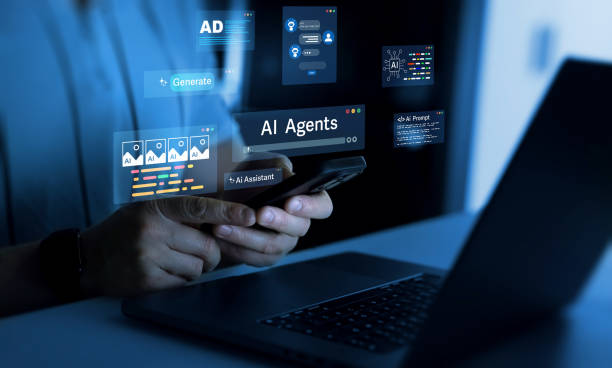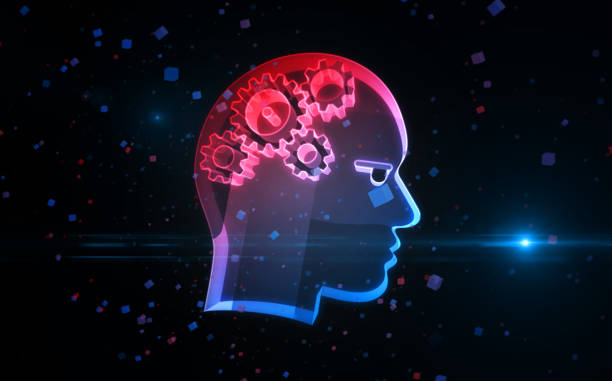What is Artificial Intelligence? Definition, History, and Fundamental Concepts

#ArtificialIntelligence (Artificial Intelligence or AI) is a branch of computer science that seeks to create machines that can perform tasks that typically require human intelligence.
These tasks include learning, reasoning, problem-solving, natural language understanding, and pattern recognition.
Artificial intelligence is not just a new concept; it has a long history.
The initial ideas were formed in the 1940s and 1950s, and the term “artificial intelligence” was coined in 1956 at a conference in Dartmouth.
The fundamental concepts in #ArtificialIntelligence include machine learning algorithms, neural networks, natural language processing (NLP), and computer vision.
Machine learning allows machines to learn from data without explicit programming.
Neural networks recognize complex patterns by mimicking the structure of the human brain.
Natural language processing gives machines the power to understand and produce human language, and computer vision allows them to see and interpret images.
With the use of artificial intelligence, the goal is to create systems that are capable of performing tasks that were previously only possible by humans.
This includes complex decision-making, answering customer questions, driving cars, and even creating art.
Artificial intelligence is the driving force behind many emerging technologies.
In other words, artificial intelligence tries to transfer “intelligence” to the “machine” so that the machine can perform tasks independently and intelligently.
Are you dissatisfied with low sales from your online store?
Rasaweb is your solution for having a professional and high-selling online store.
✅ Significant increase in sales and revenue
✅ Easy and enjoyable shopping experience for customers
⚡ Get a free consultation from Rasaweb right now!
Types of Artificial Intelligence: Approaches and Applications

Artificial intelligence can be categorized based on different abilities and approaches.
In terms of ability, there are two main categories: weak artificial intelligence (Narrow AI) and strong artificial intelligence (General AI).
Weak artificial intelligence is designed to perform specific tasks and performs very well in that task (such as voice assistants or facial recognition systems).
Strong artificial intelligence seeks to create machines that can perform any task that a human is capable of doing.
This type of artificial intelligence is still in the research stages.
In terms of approach, artificial intelligence can be divided into symbolic and connectionist.
The symbolic approach focuses on using symbols and logical rules to represent knowledge and reasoning.
The connectionist approach uses neural networks to learn patterns from data.
The applications of artificial intelligence are very broad and have affected almost all industries.
In the medical field, artificial intelligence is used for diagnosing diseases, developing drugs, and providing personalized care.
In the financial field, artificial intelligence is used for fraud detection, risk management, and providing advisory services.
In the manufacturing field, artificial intelligence is used to optimize processes, control quality, and predict maintenance.
Artificial intelligence is transforming the way we live and work.
In the near future, we will witness the prevalence of artificial intelligence in businesses.
Machine Learning (ML) and its Role in the Development of Artificial Intelligence

Machine Learning (ML) is a subset of artificial intelligence that allows machines to learn from data without explicit programming.
In fact, instead of writing code for each scenario, machine learning algorithms use data to recognize patterns and create models that can be used for prediction or decision-making.
There are different types of machine learning algorithms, including Supervised Learning, Unsupervised Learning, and Reinforcement Learning.
In supervised learning, the algorithm is trained using labeled data.
In unsupervised learning, the algorithm looks for patterns in unlabeled data.
In reinforcement learning, the algorithm learns how to maximize reward by interacting with an environment.
Machine learning plays a very important role in the development of artificial intelligence.
Many recent advances in fields such as computer vision, natural language processing, and robotics have been made possible by the use of machine learning algorithms.
For example, facial recognition systems used in smartphones and social networks use machine learning algorithms to identify faces in images.
The table below lists some of the most common machine learning algorithms and their applications:
| Algorithm | Application |
|---|---|
| Linear Regression | Predicting housing prices, forecasting sales |
| Logistic Regression | Spam email detection, disease diagnosis |
| Support Vector Machines (SVM) | Image recognition, text classification |
| Decision Tree | Credit decision-making, fraud detection |
| Neural Networks | Computer vision, natural language processing |
Machine learning is constantly evolving, and new algorithms are being developed that can solve more complex problems.
The future of artificial intelligence is highly dependent on advances in machine learning.
Natural Language Processing (NLP) and Understanding Human Language

Natural Language Processing (NLP) is a branch of artificial intelligence that enables machines to understand and generate human language.
NLP includes a wide range of tasks, including sentiment analysis, machine translation, text summarization, and question answering.
One of the most important challenges in NLP is the ambiguity of human language.
A word or phrase can have different meanings, depending on the context.
NLP algorithms must be able to resolve this ambiguity in order to understand the language correctly.
NLP is used in many applications, including voice assistants (such as Siri and Alexa), chatbots, machine translation systems, and search engines.
For example, voice assistants use NLP to understand user commands and answer questions.
Chatbots use NLP to communicate with customers and provide support.
Machine translation systems use NLP to translate text from one language to another.
By leveraging the power of NLP, one can hope to expand #ArtificialIntelligence .
Is your company’s website as professional and reliable as it should be? Create an online presence that reflects your credibility and attracts more customers with professional corporate website design by Rasaweb!
✅ Build a powerful and professional image of your brand
✅ Convert visitors into real customers more easily
⚡ Get a free consultation right now!
Computer Vision and Interpreting Images

Computer Vision (CV) is a branch of artificial intelligence that allows machines to see and interpret images.
CV includes a wide range of tasks, including object detection, face recognition, motion detection, and 3D reconstruction.
One of the most important challenges in CV is the variability of images.
Images can be affected by various factors, including lighting, viewing angle, and occlusion.
CV algorithms must be able to manage this variability in order to interpret images correctly.
CV is used in many applications, including self-driving cars, surveillance systems, medical diagnosis, and robotics.
For example, self-driving cars use CV to detect obstacles and traffic signs.
Surveillance systems use CV to detect suspicious activities.
Doctors use CV to diagnose diseases in medical images.
Using CV, machines can “see” and understand the world around them, just like humans.
Robotics and Combining Artificial Intelligence with the Physical World
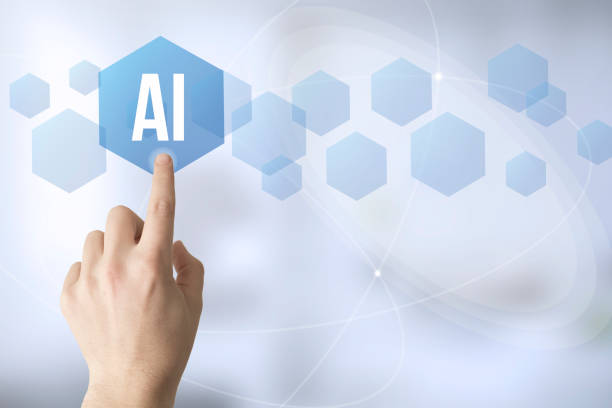
Robotics is a field that deals with the design, construction, operation, and application of robots.
Robots are often used to perform tasks that are dangerous, repetitive, or difficult for humans.
By combining artificial intelligence with robotics, we can create robots that are capable of performing more complex tasks and operating independently in complex environments.
Robots equipped with artificial intelligence can collect information from the environment through sensors, process this information, and make decisions based on it.
They can also improve their performance over time through machine learning.
These types of robots are used in industries such as manufacturing, logistics, healthcare, and agriculture.
For example, in the manufacturing industry, robots equipped with artificial intelligence can assemble parts, check the quality of products, and automatically respond to changes in the production process.
In healthcare, robots can assist surgeons in surgeries, deliver medication, and care for patients.
The combination of robotics and artificial intelligence enables the creation of advanced automated systems that can increase productivity, reduce costs, and improve safety.
Applications of Artificial Intelligence in Various Industries

As mentioned earlier, the applications of artificial intelligence are very broad and have affected almost all industries.
In this section, we will take a closer look at the applications of artificial intelligence in a few key industries.
Healthcare: Artificial intelligence is used in diagnosing diseases, developing drugs, providing personalized care, and managing hospitals.
Machine learning algorithms can analyze medical images and diagnose diseases with high accuracy.
Surgical robots can perform complex surgeries with greater precision.
Finance: Artificial intelligence is used in fraud detection, risk management, providing advisory services, and algorithmic trading.
Machine learning algorithms can identify suspicious patterns in financial data and prevent fraud.
Artificial intelligence systems can assess financial risks and help investors make decisions.
Manufacturing: Artificial intelligence is used to optimize processes, control quality, predict maintenance, and manage the supply chain.
Robots equipped with artificial intelligence can perform repetitive and dangerous tasks and improve product quality.
Artificial intelligence systems can predict the need for equipment maintenance and prevent failures.
The table below lists some other applications of artificial intelligence in various industries:
| Industry | Application |
|---|---|
| Retail | Personalized product recommendations, customer service chatbots |
| Transportation | Self-driving cars, route optimization |
| Education | Personalized learning, automated evaluation systems |
| Agriculture | Precision agriculture, detection of plant diseases |
Challenges and Limitations of Artificial Intelligence
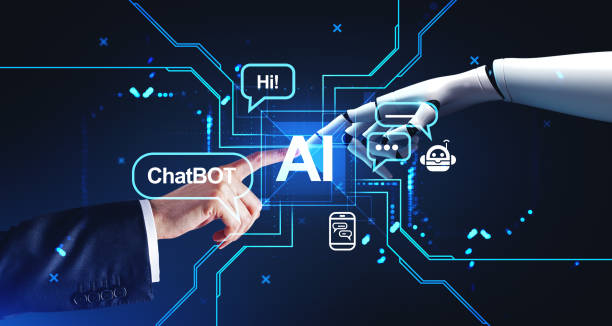
Despite significant advances, artificial intelligence still faces challenges and limitations.
One of the most important challenges is the need for large and high-quality data.
Machine learning algorithms require large amounts of data for training.
If the data is incomplete or incorrect, the performance of the algorithms is severely reduced.
Another challenge is the interpretability of artificial intelligence models.
Many machine learning algorithms, such as deep neural networks, are black boxes that are difficult to understand how they make decisions.
This can create problems in areas such as medicine and law, where the reasons for decisions need to be explainable.
In addition, ethical issues related to artificial intelligence must also be considered.
The use of artificial intelligence can lead to discrimination, job loss, and privacy violations.
For example, facial recognition algorithms may be less accurate in identifying people with darker skin tones.
Automation based on artificial intelligence can cause job losses in some industries.
To overcome these challenges, more research is needed in areas such as learning with limited data, explainable artificial intelligence, and ethics in artificial intelligence.
How much does losing business leads due to a non-professional website cost you? Solve this problem forever with professional corporate website design by Rasaweb!
✅ Increase the credibility and trust of potential customers
✅ Attract new business leads more easily
⚡ Get a free consultation now!
The Future of Artificial Intelligence and its Impact on Society
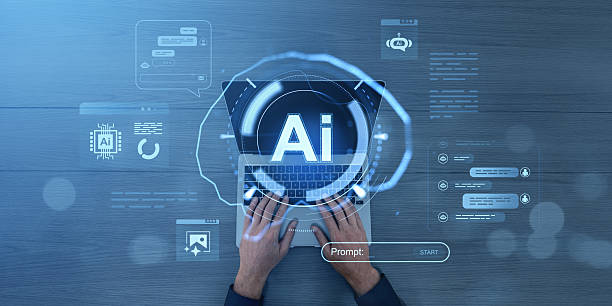
The future of artificial intelligence looks very bright.
With continued advances in algorithms, hardware, and data, artificial intelligence will be increasingly capable of doing things that previously seemed impossible.
Artificial intelligence is rapidly advancing.
It is predicted that artificial intelligence will have a profound impact on society.
Artificial intelligence can help solve some of the world’s biggest challenges, such as climate change, disease, and poverty.
Artificial intelligence can also lead to increased productivity, job creation, and improved quality of life.
However, it is important to remember that artificial intelligence is a powerful tool that can be used for both good and evil.
To ensure that artificial intelligence is used for the benefit of everyone in society, we must pay close attention to the ethical and social issues related to artificial intelligence.
Overall, the future of artificial intelligence is full of opportunities and challenges.
With proper management, artificial intelligence can become the driving force for progress and prosperity around the world.
How Can We Prepare for the Future with Artificial Intelligence?

To be able to benefit from the advantages of artificial intelligence and avoid its potential dangers, we must prepare for the future with artificial intelligence.
This preparation includes the following:
Learning and Education: We must learn the skills necessary to work with artificial intelligence.
These skills include programming, statistics, machine learning, and ethics in artificial intelligence.
Governments and organizations should provide educational and support programs to help people acquire these skills.
Policy and Legislation: Governments should develop policies and laws that promote the responsible use of artificial intelligence and protect the rights of individuals.
These policies should include things like privacy protection, preventing discrimination, and ensuring transparency.
Cooperation and Information Exchange: Researchers, industrialists, governments, and non-governmental organizations should cooperate with each other to share their knowledge about artificial intelligence and develop best practices.
This cooperation can help accelerate the progress of artificial intelligence and ensure its responsible use.
Critical Thinking: We must strengthen critical thinking about artificial intelligence.
We must be aware of exaggerated and unrealistic claims about artificial intelligence and make informed decisions about the potential impacts of artificial intelligence on society.
By taking these measures, we can prepare for the future with artificial intelligence and use this powerful technology for the benefit of all.
In conclusion, artificial intelligence is one of the most important issues in the world today and should be given special attention.
Frequently Asked Questions
| Question | Answer |
|---|---|
| 1. What is Artificial Intelligence (AI)? | It is a branch of computer science that aims to create machines capable of simulating human intelligence and performing tasks that require human thinking, such as learning, problem-solving, and decision-making. |
| 2. What are the main types of Artificial Intelligence? | They can be classified into Weak Artificial Intelligence (Narrow AI) that focuses on a specific task, General Artificial Intelligence (General AI) that possesses comprehensive human capabilities, and Super Artificial Intelligence (Super AI) that surpasses human intelligence. |
| 3. Mention some common applications of Artificial Intelligence in our daily lives. | These include voice assistants (such as Siri and Alexa), recommendation systems (such as Netflix and Amazon), self-driving cars, facial recognition systems, and spam filters. |
| 4. What is the difference between Artificial Intelligence and Machine Learning? | Artificial Intelligence is the broader concept of creating intelligent machines, while Machine Learning is a subset of Artificial Intelligence that focuses on enabling systems to learn from data without explicit programming. |
| 5. What is Deep Learning? | It is a subset of Machine Learning that uses artificial neural networks with multiple layers (deep neural networks) to process data and discover complex patterns, and is used in image and speech recognition. |
| 6. What are the most prominent benefits of Artificial Intelligence? | Improving efficiency and productivity, automating repetitive tasks, making better decisions based on the analysis of big data, and developing solutions to complex problems in fields such as medicine and science. |
| 7. What are the main challenges facing the development and deployment of Artificial Intelligence? | These include the need for huge amounts of high-quality data, privacy and security issues, bias in data and algorithms, and high development and maintenance costs. |
| 8. Does Artificial Intelligence raise ethical or social concerns? | Yes, it raises concerns related to privacy, algorithmic bias, job loss due to automation, responsibility for errors committed by intelligent systems, and the need for a regulatory framework. |
| 9. How can Artificial Intelligence affect the future of the labor market? | It can lead to the automation of some routine jobs, but it will also create new jobs that require advanced skills in developing, operating, and maintaining Artificial Intelligence systems. |
| 10. What are some modern or promising technologies in the field of Artificial Intelligence? | These include advanced Natural Language Processing (NLP) (such as large language models like ChatGPT), Computer Vision, Robotics, and Generative Artificial Intelligence (Generative AI). |
And other services of Rasa Web Advertising Agency in the field of advertising
Smart Conversion Rate Optimization: An exclusive service for growing website visits based on custom programming.
Smart UI/UX: A fast and efficient solution for attracting customers by focusing on attractive user interface design.
Intelligent Custom Software: Transform SEO rankings with the help of marketing automation.
Smart Digital Advertising: A new service for increasing digital branding through Google Ads management.
Smart Content Strategy: An innovative service for increasing user engagement through the use of real data.
And more than hundreds of other services in the field of internet advertising, advertising consulting, and organizational solutions
Internet Advertising | Advertising Strategy | Advertorials
Resources
What is artificial intelligence and what are its applications?
,What is Artificial Intelligence?
,What is artificial intelligence and what are its applications?
,The future of artificial intelligence, opportunities and challenges
? Rasa Web Digital Marketing Agency, specializing in providing comprehensive digital solutions for your business. From SEO strategies and content marketing to advanced online store design and targeted advertising campaigns, we transform your online presence.
📍 Tehran, Mirdamad Street, next to the Central Bank, South Kazerun Alley, Ramin Alley No. 6
“`

